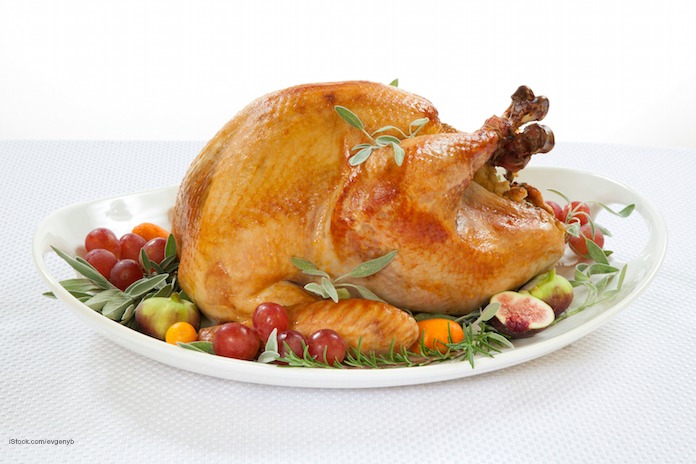The CDC is offering Thanksgiving food safety steps for you to follow as you prepare this holiday dinner to stay safe. This Thanksgiving will be different, with fewer large gatherings and more people staying home to protect themselves against Covid-19. So avoid food poisoning, which is a major risk during the pandemic, with these tips.

First, keep it clean. Always wash your hands with soap and water before you start to cook and eat. Make sure that food preparing surfaces and utensils are clean and sanitized before you start to cook. Think about sanitizing the sink and countertops before you bring out the food. You can use a commercial product or make your own by mixing 1 tablespoon liquid chlorine bleach with one gallon of warm water.
For meal prep, make sure that you keep raw meat, poultry, and eggs separate from produce and foods that are already cooked. Prepare vegetables, fruits, and salads, and refrigerate them before you start to handle raw poultry or meat.
Never rinse your turkey before cooking! That action will aerosolize the bacteria on the turkey under the faucet, which can spray bacteria up to three feet away. And USDA research has found that 25% of people who wash their poultry cross-contaminate other food items being prepared with pathogens from the poultry. The only way to get rid of bacteria is to cook the poultry to a safe final internal temperature.
Always use a food thermometer when cooking turkey. Insert the thermometer into the thickest part of the breast, the innermost part of the thigh, and the innermost part of the wing. Turkey should be 165°F before it’s safe to eat. Remember you can’t see, smell, taste, or feel bacteria on meat or poultry.
After the feast, store leftovers promptly. You only have two hours after food is cooked or brought out of the refrigerator to refrigerate it. Divide the leftovers into smaller, shallow containers so they cool quickly and spend less time in the danger zone of 40°F to 140°F when bacteria grown rapidly. And when you reheat leftovers, make sure they reach 165°F. Use that food thermometer again too. Sauces and gravies should be heated to a rolling boil.
Have a happy and safe holiday by following these Thanksgiving food safety steps!




